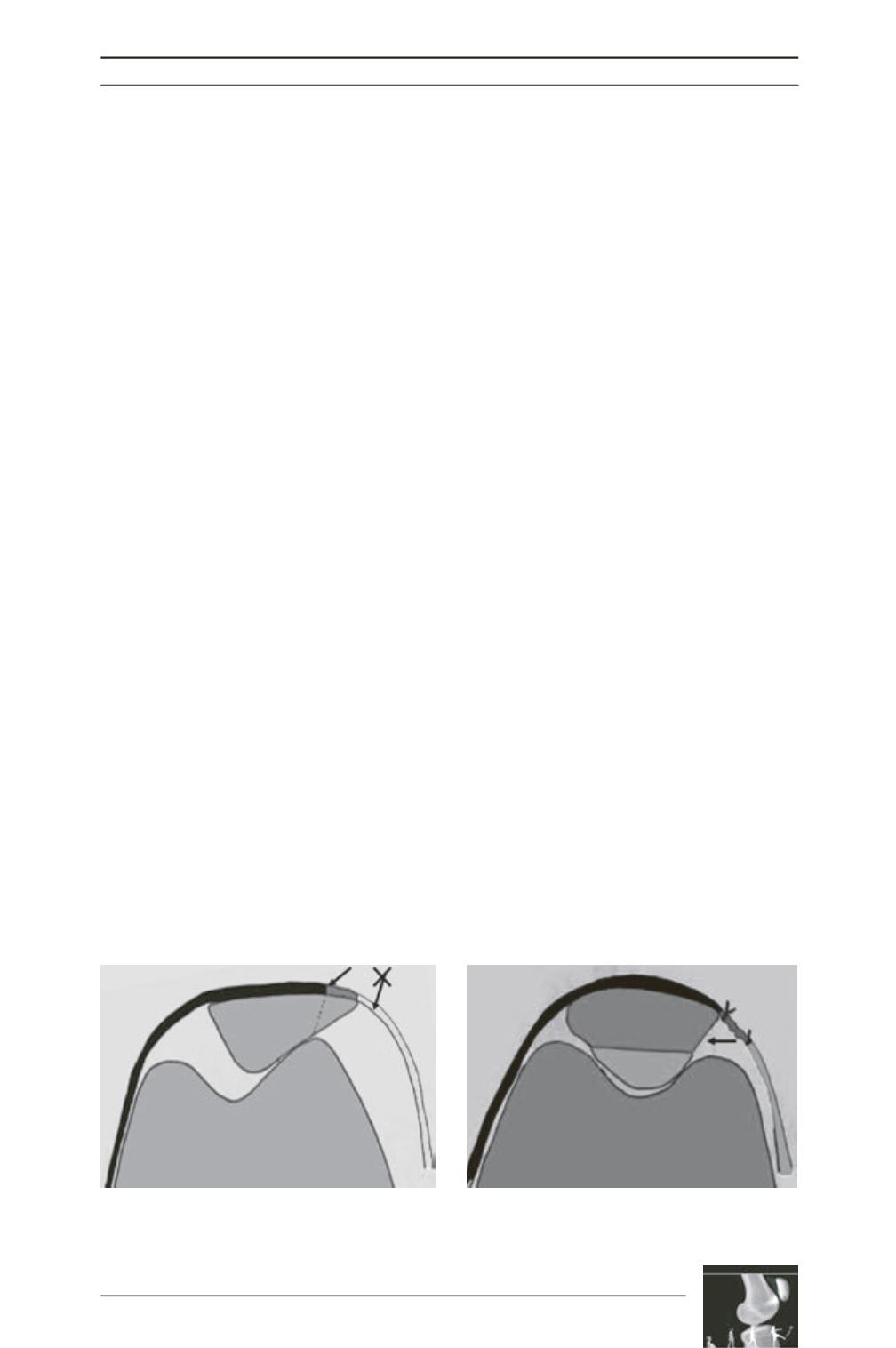

Approach and Patella in Total Knee Arthroplasty
323
The incision is a little bit longer than a medial
approach. The approach is passing between
the tendons of the rectus femoris and the
vastus lateralis. In order to open the patellar
retinaculum laterally a few millimeters from
the paella, a 1cm incision is made in the
prepatellar periosteum along the lateral
border of the patella (fig. 1a) followed by
medial to lateral removal of the perisoteum,
the lateral marginal portion of the patella
being exposed and sectioned with an
oscillating saw to achieve marginal lateral
patellectomy (fig. 1b).
The patella is then medially everted, taking
care of the patellar tendon attachment. It is
often necessary to release the lateral third of
the patellar insertion. Rarely, there is a need for
Antertior Tibial Tuberosity (ATT) elevation.
Which of course improves themedial exposure?
In these cases, ATT osteotomy should be long
enough to allow a strong fixation.
The lateral retinaculum is closed at the end of
the procedure (fig. 1b). In case ofATT elevation,
ATT is fixed with screw and wires (fig. 2), or
cerclage alone without medialization.
We conducted a comparative study between
medial parapatellear approach and lateral
approach [2] with ATT elevation in a selected
group of lateral patellar subluxation.
Inclusion criteria were: presence of lateral
patellar glide of at least 5mm from the trochlear
groove on the preoperative 30° patellofemoral
view and a lateral surgical approach with ATT
elevation (we systematically used at that
time).
Thirteen knees fulfilled the inclusion criteria
(lateral “group”). This group was matched with
thirteen other knees which also presented
lateral patellar glide of at least 5mm
preoperatively but which were operated on via
a medial approach (“medial” group) during the
same period.
The two groups were comparable regarding
patient age, gender, body weight, range of
motion pre- and postoperative HKA, pre op
patellar displacement, patellar height,
preoperative patellar thickness.
There were no complication related to lateral
approach and specially elevation of the ATT.
Gliding was similarly corrected in both groups,
but the residual tilt was in the medial group
(lateral tilt), versus in the lateral group (medial
tilt) (table 1) (fig. 3).
Our results are similar to those already
published. Arnold [3] and Burki [11]
demonstrated that the lateral parapatellar
approach with elevation of the ATT enables
better restitution of good patellar kinematics
without patellar resurfacing. For Vielpeau [35]
the stability of the patella is one of the
advantages of the lateral approach which
enables correction of the preoperative lateral
tilt if a good ligament balance is achieved in
flexion. How does approach influence the
patellar tracking?
Fig. 1: a) lateral approach. Lateral retinaculum is cutted just at the rim of the patella. Periosteum is then
released. - b) allowing a lateral marginal facettectomy which allows to lengthen the lateral retinaculum.
a
b











